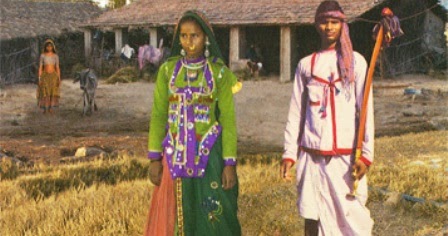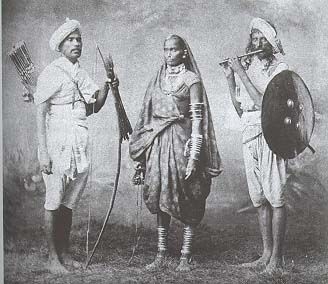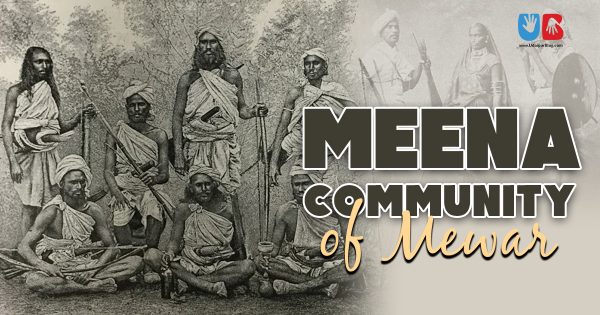History of Meena Community
The information about the Meena tribe was extensively documented by British historians and anthropologists during the colonial period. Some of them are Colonel Tod, Crooke, and Russell. It is said that the data given by the above officials have been manipulated up to some extent. Hence it was observed that most of the facts and knowledge about this tribe were blurred out. Meenas during the British rule were classified as a criminal tribe under the Criminal Tribes Act: a notorious colonial law which listed certain forest communities as ‘criminal by birth’. Post- independence this tribe was moved to the “denotified list” from the criminal list and thus a path of growth was laid out for them. There have been numerous speculations around the origin of the Meena tribe. Although there is no proof of the etymology of the tribe but it is believed to come from the word “meen” which means a fish but consuming fish is taboo and hence this is not a reliable discovery.
There have been no efforts made to know the history of the Meena tribe event by event. It is important to know that the Meena tribe was first mentioned in 500 BC. History claims that almost 18 km far from Udaipur city flowed the Maural river. On the banks of this river developed a city called Mauran. The citizens of this city are known as Maureja or Maureda. Some others trace the term Meena to the Mauryan empire and argue that Meenas were the citizens of the Mauryan Empire and that is why even today they are known under Maureja or Maureda. There is no written historical account about the Meena tribe hence most that is known is based on oral history.

The Meena tribe’s history can be traced back to events that occurred in the 12th century. When writing on the Rajput states, Colonel Tod made reference to the Meena tribe. He wrote an interesting story about the origin of Meena or them coming to light. He mentioned that the state of Narmer was ruled by a Meena. When prince Sor Singh of Narmer died, his brother acquired the state illegitimately. The actual successor of the throne, that is the son of Sor Singh, was still an infant. His name was Dhola Rai. The mother of Dhola Rai was extremely upset about the unfair treatment done to his son. One day she left the city of Narmer dressed as a man with Dhola Rai in a basket. She reached Khorgoj (Jaipur) which was the home of the Meena tribe. The tired mother started plucking and eating berries from the wild. As she turned back to her son, she saw a large snake. The scared mother started yelling for help. A brahmin was passing by and comforted her saying that it was a good omen. “That the boy will achieve great things in life,” he said. And eventually, as Dhola Rai grew up he was able to acquire his father’s land back with the help of the neighbouring states.
Socio-Cultural Association of The Meena Community
As far as the settlement pattern of the Meena Community is concerned, the smallest unit is known as Dhani. Dhani consists of the houses of the members of the villages. They are a patriarchal society. The members believe in the origin of one known ancestor. The ancestor is considered as the founder of the Dhani. The collective front of these Dhanis makes a Meena village. The Dhani-based villages of the Meena community are found in Jaipur.
However, the villages of the Meena tribes in Sawai Madhopur and Udaipur do not cover the Dhani system. What Meenas call Dhani, Bheels call “fala”. The families living in Dhani are brothers and sisters. Hence, marital relations cannot be made. Generally, a non-Meena does not reside in a Meena-Dhani. The range of the houses in a Dhani is from 2 to 20 houses.
The lifestyle of the Meena Community
Meena communities live in a compact village. Their settlement pattern is not the same as the scattered villages of Bhils. They generally prefer to live near their cultivation land, thus resulting in compact settlements. The architecture of the houses of the Meena tribe is according to the hot weather of southern Rajasthan, the walls are made of soil and the roof is flat. Partition within the house is also made by the walls out of the soil and the structure has one entrance. The stock of grains and all the random commodities are placed in the living room itself. There is this open space outside the house where men spend most of their time and the women of the house live inside the structure. Along with the cultivation of food grains the community is also involved in poultry and animal husbandry.

The saga of the forest people of Mewar is an unspoken chapter in history books. The region of Mewar is teeming with stories of heroism, sacrifice, cultural richness and above all, the supreme love for the motherland. The contribution of the forest dwellers of Mewar in that story of bravery is no less. They have remained the watchmen of the Aravalli and the Dharmarakshaks of the highest order. They have protected Bharat and Mewar against all dangers. The Maharana Mewar Foundation gives an award in the name of Rana Punja to honour the exemplary contributions of persons of tribal origin. It is the sincere attempt of this article series to bring to light, the endless contributions of the Mewar forest people in the service of ‘Eternal Mewar’ and the timeless civilization that is Bharat, especially as we celebrate the Amrit Kaal of independence.
Vande Mataram! Jai Mewar!


